 |
||
|---|---|---|
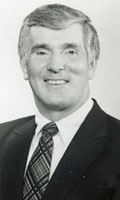 |
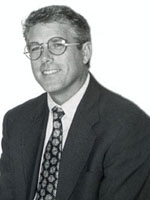 |
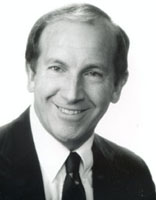 |
| Gordon Boettcher Ann Arbor Huron |
Carl Burgess Kalamazoo Christian |
Tom Leyrer Jenison |
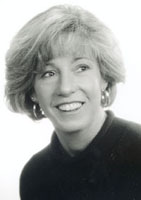 |
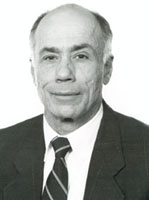 |
 |
| Karen Page West Ottawa |
Dean Sousanis Almont |
Hal Stofer Three Rivers |
(click on Inductee's name to read 'description')

Gordon Boettcher, Ann Arbor Huron
Nobody who was there will ever forget; it is the stuff of which legends are made. At a very tense MHSAA boys seeding meeting in 1978, one which included any coach who wished to attend and thus was rife with irritable bickering and abounding in both literal and figurative headaches, Gordon Boettcher, in promoting one of his players for a seed, declared, after a pause, "and heÕs a swell fellow!" His remark totally broke up the room in laughter. The story is fondly recalled to this day.
Few will forget GordonÕs presentation at one of our clinics on "How to run a tip-top tourna-ment." Some may not remember the tips but all will recall Gordie telling one fascinating story after another. He had the group continuously roaring with laughter to the point where some were wiping the tears from their eyes.
Few will also forget that it was GordonÕs teams which released powerful Kalamazoo Loy NorrixÕs grip on the state boys team championship after the first year of the flight champion-ships when Norrix swept 6 of 7 flights. GordieÕs Ann Arbor Huron squad, displaying some of the greatest depth in Michigan high school tennis history, captured state titles in 1978, 1980,1981, and 1983 and was runnerup in 1982. Over the years, 10 of his players have gone on to be captains of their college teams. Gordie, in turn, went on to be the MHSTeCAÕs first Class A Coach of Year.
Few should forget that Gordon was a pioneer in the MHSTeCA whose service to our association and the MHSAA has been almost unparalleled. He was one of the first MHSTeCA directors to meet in those early years at Houghton Lake. He was one of the first members to serve (for five years) on the MHSAA seeding committee when it was established. He wrote, published, and mailed the first 20 issues of the newsletter, and years later, stepped in several times to rescue this flagging effort. He was manager of no fewer that five Class B and Class C-D state tournaments. He has directed so many major summer tournaments in his community that the Ann Arbor News once dubbed him "Mr. Tennis of Ann Arbor," no small achievement when one considers the pe-rennial prominence of this community in both state high school and summer tennis circles.
To repeat: This is a man who has won several Class A state championships, managed several state tournaments, and written many of the best newsletters our association has published. Cer-tainly, greatness may be measured by using these achievements but true greatness resides in one who not only triumphs but sets a new standard in the process. GordieÕs ten-man teams were some of the best assembled under the flight format. His tournaments were, and still are, such memorable affairs that players actually look forward to returning the following year, just to hear his opening speech. His newsletters set the standard for fluent, engaging, absorbing journalism.
Indeed, the mere mention of GordonÕs name invariably evokes a smile. His effervescent good boundless humor, and distinguished record of achievement command the attention of any into which this "swell fellow" walks. The Hall of Fame gallery was most certainly incom-plete until this moment when he takes his proper place beside some of the best coaches in Michi-gan high school tennis history.
Carl Burgess, Kalamazoo Christian
When Carl Burgess was growing up in Byron Center, tennis was not an option. There were no tennis courts in the community and, thus, the schools didnÕt offer the sport. Indeed, being the oldest of ten kids, he didnÕt participate in high school athletics at all. In fact, when he was asked to take over the boys tennis program at Kalamazoo Christian in 1973, he was coaching baseball at the time, although he knew so little about the game that, as he puts it, "The kids at the end of the bench did more coaching that I did." The dismal team records of those early tennis coaching years were also indicative of how much he knew about the sport at the time, even though in his inaugural season, his "team" (one incredible player) tied for the state team title under the old format. Nevertheless, in 1978 the Lightvoet family of Kalamazoo en-couraged him to also coach the girls team at the high school, their influence being a critical component in his decision to continue to direct the tennis program. The result is a career so impressive as to be worthy of induction into the Hall of Fame.
This past girls season represents the kind of coach Carl has been over the years. He calls it his worst girls season but one in which he had the most fun. Only three girls with any competitive experience returned and yet the team qualified for state competi-tion due to an upset in regional play. Carl even had an ear pierced as the result of a bet he lost with his kids. Picture an entire team going to the mall to witness an event that demonstrates a genuine love and commitment for his kids and his program.
Under Carl, Kalamazoo Christian has been around the top of the Kalamazoo Valley League for over 20 years. In addition, the boys and girls teams have finished any-where from 2nd to 4th in the Class C-D State Championship numerous times. He credits the Lightvoet family, who over the years provided not only stellar female tennis players but a work ethic and enthusiasm that rubbed off on both teammates and coach. He credits J.P. Oosterbaan, a transfer from Loy Norrix, for reviving a flagging boys program, not only with his excellence but with a leadership that "brought athletes out for tennis."
But it is the purpose of this gathering to give the self-effacing Carl the credit he him-self deserves. Colleagues are unstinting in their praise of this gentleman, particularly of his character. Ever gracious in victory, he is even more honorable in defeat, congratulating his opponent in the face of sometimes bitter defeat. He is one of those special coaches to whom you donÕt mind losing, one whose presence, air, and attitude transcend the mere winning and losing of a contest. Certainly for his accomplish-ments, but more for his substance, Carl Burgess takes his rightful place in the Michi-gan High School Tennis Coaches Hall of Fame.
Tom Leyrer, Jenison
Tom Leyrer began his competitive tennis career by playing first singles on a junior high team in Dearborn. Thus, it seems only fitting that he began his coaching career at another junior high, this one feeding Warren Fitzgerald High School. As a result of these early experi-ces, he started a praiseworthy state-wide exchange program when he moved to Jenison by promoting a match between Jenison and Fitzgerald high schools. Each year, one school would host the other in an over-the-weekend contest that featured overnight stays and visits to Tiger Stadium for the Jenison players. He also made it a point to several times take groups of 50 boys and girls to the Palace of Auburn Hills to see inspirational exhibition matches featuring Chris Evert vs. Martina Navratilova, Andre Agassi vs. Ivan Lendl, and Steffi Graff vs. Zina Garrison.
Tom grew up in Dearborn where he was introduced to the game in the summer of 1962. He played doubles and singles for Dearborn High School, finishing his senior year at second singles with a record of 15-1. He was team captain that year of a Class A regional championship team and went on to play tennis at Western Michigan University.
Tom created his own first coaching position in 1970, establishing Chatterton Junior HighÕs first tennis team. While there, he coached, among others, Mark Sobieraiski, who went on to not only a distinguished playing career but also was a MHSTeCA coach of the year in 1991. While at Chatterton, Tom taught adult education tennis and by the fourth season, was receiving all of $50.00 a season. In 1974, he began coaching both boys and girls tennis at Jenison, again going into the junior high schools to promote the game via the USTA JH School Program Assemblies. He persuaded junior high parents to fund a tennis program which was coached that first year by one of his former varsity players. There are now large junior high girls and boys teams each season as part of JenisonÕs regular athletic program.
As interest grew in Jenison, Tom developed a junior varsity team. For several seasons, he coached both the varsity and JV programs until they have grown popular enough to warrant their own coach. In addition, after coaching for 30 seasons on 6 courts with teams as large as 50 members, he convinced JenisonÕs administration to double the tennis facilities to 12 courts. Tom has taken advantage of these facilities to host regional and conference tournaments as well as one girls and two boys invitational contests annually.
The results of these efforts have been noteworthy. Stuck in the East Grand Rapids, Forest Hills Central area, Jenison has still managed to qualify two state teams, three individual boys, three individual girls, and a doubles team for state tournament play. Several of TomÕs kids have gone on to college experiences at MSU, University of Hawaii, and Hope College. In spite of this "few stars" record, he has earned the respect of his peers by emphasizing a total team approach. Car-rying this over to collegial activities, he has preferred to work beside his fellow coaches, but has stepped to the forefront when the situation called for it. For 43 consecutive tennis seasons, he has given much to his kids, his school, and to Michigan high school tennis. Such an individual most certainly belongs in the MHSTeCA Hall of Fame.
Karen Page, Holland West Ottawa
After Karen Page graduated from college in 1971, her family moved to Holland, Michi-gan. At that time, tennis was booming in this, and many other, communities and Karen, who was working as a waitress-hostess at the local Holiday Inn, put an ad in the local newspaper offering tennis lessons. The rest, as they say, is history in that, within the past two decades, she has gone from the girl with the bucket of balls giving one-on-one lessons on both public and private courts in and around the Holland area to her current position as Director of Tennis as HollandÕs Dewitt Tennis Club. She has also been Holland West OttawaÕs first and only girls tennis coach, starting the program in 1974, and has been their boys varsity coach since 1991.
The above is no small feat, given HollandÕs rich history of tennis excellence. No fewer than three Holland tennis coaches are in the MHSTeCA Hall of Fame. Thus, Karen must have been impressive to achieve so much. Indeed, an accomplished player, she was, together with her twin sister, a state semifinalist in her senior year of high school in Des Moines, Iowa. She went on to help start the girls team at Iowa State University on her way to a degree in physical education. Thus she brought to Holland a blend of skill and enthusiasm which attracted athletes and admirers. Karen was and is the cheerleader-coach who combined an emphasis on physical conditioning (She owned and operated her own aerobics studio in Holland for several years) with the ability to not only teach but demonstrate the techniques of tennis.
In addition, she has immersed herself in the administrative aspects of the game on several levels. Over the years, Karen has managed five conference tournaments, been site director at numerous regional tournaments, and has even been instrumental in the management of two state tournaments held on HollandÕs considerable facilities. Her club responsibilities have kept her in close contact with her high school charges on a day-to-day, year-round basis. As the club manager, league coordinator, instructor, and organizer of all lesson programs, she has been able to keep a close relationship, not only with the kids from West Ottawa but also with players from all of the Holland area high schools. As the Western Michigan Girls Endorser for the Western Michigan Tennis Association, she is widely known and respected by the districtÕs top players. Karen has also been faithful in attending semiannual MHSTeCA Board of Director meetings as a district representative. In charge of the all-state selection process, she has, for the past seven years, organized the work of the committees who choose the teams and has lettered and mailed hundreds of the associationÕs all state certificates. As our first vice president, she will resume the mantle of president of the Michigan High School Tennis Coaches Association next year.
To be such a worker, a doer who amazes people with her enthusiasm and energy, is laudable. To be so well-thought of by players and coaches from Holland and its neighboring communities is admirable. To be elected president of our association is indeed a high honor. To be elected to the Hall of Fame by past presidents and current officers of the MHSTeCA, we hope, eclipses all this.
Dean Sousanis, Almont
Dean Sousanis was 31 years old and had never played tennis when he was asked to coach one of the "minor" spring sports, tennis, back in 1972. At that time, the schedule included only 6 matches and athletes in Almont could play all three spring sports. In addition, this small community had only two cracked asphalt courts at the school when he started. Taking on the task with characteristic enthusiasm and hard work: